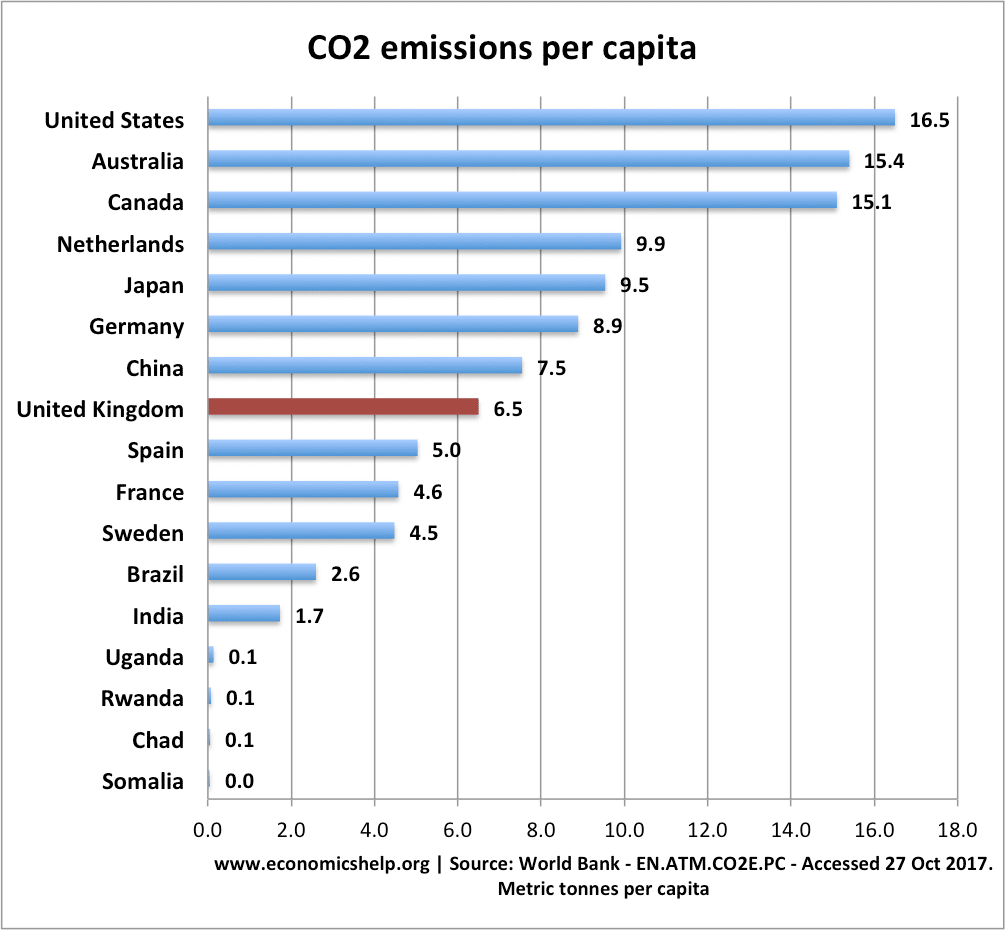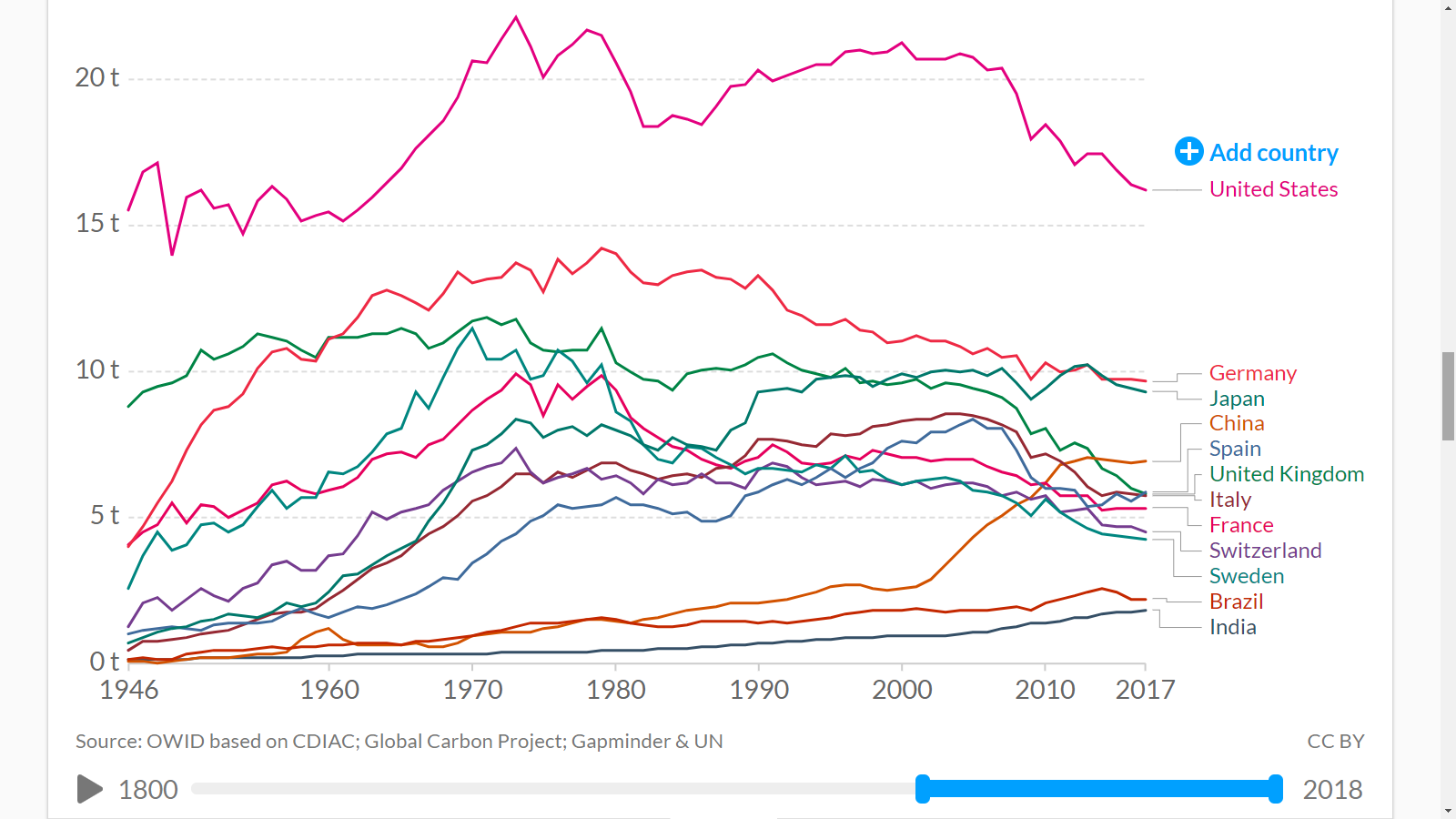No less than 90% of American homes have air conditioning. In Europe it's under 1% (except in Italy and Spain where its a bit over 10%). It's not because the United States has a hotter climate. It's really a cultural thing, and that partly explains why the average American produces nearly twice more greenhouse gas emissions than the average European.


According to the U.S. Energy Information Administration, air conditioning accounts for about 12% of U.S. home energy expenditures. There are obviously regional differences in AC usage, but even in cold and very cold regions, which make up over half of the country, people think it necessary to have air conditioning.

According to this website, it's more common in U.S. homes to have an air conditioning unit than a dishwasher, garage, or dining room. All this has a impact on global warming. 100 million tons of carbon dioxide release into the air annually, which is about 2 tons per home, via air conditioners.
In fact, the U.S. uses more energy for air conditioning than all other nations combined.
The following article makes a few good points.
Washington Post: Europe to America: Your love of air-conditioning is stupid
"The weather in Washington, D.C., and Berlin, Germany, has been pretty similar recently. There is one striking difference between the two capitals, though: Whereas many Americans would probably never consider living or working in buildings without air conditioning, many Germans think that life without climate control is far superior.
The divide isn't limited to Berlin and D.C.: In fact, many Europeans visiting the U.S. frequently complain about the "freezing cold" temperatures inside buses or hotels. American tourists on the other side of the Atlantic Ocean, however, have been left stunned by Europeans' ability to cope with heat, even at work spaces or in their private homes."
[...]
"Whereas Americans prefer an average temperature of 70 degrees [21°C], Europeans would consider such temperatures as too cold, Michael Sivak from the University of Michigan says. "Americans tend to keep their thermostats at the same temperature all year around. In contrast, Europeans tend to set their thermostats higher in summer and lower in winter. Consequently, while indoors, Europeans wear sweaters in winter, while American wear sweaters in summer," Sivak told The Washington Post."
I had long wondered why in American movies and series set in southern California (mostly around L.A.) it is so common to see people wear sweaters and cardigans inside. In The Big Bang Theory, Raj always wears a t-shirt, a shirt, a sweater and a cardigan on top! Four layers ! In Los Angeles !
It's time that Americans re-think their lifestyle and habits and start acting less selfishly. I can completely understand why people in Florida or Louisiana need AC during hot and muggy summer months. But AC is not essential in dry climates. And it's definitely not necessary to set it so cold as to require to wear winter clothes indoor.


According to the U.S. Energy Information Administration, air conditioning accounts for about 12% of U.S. home energy expenditures. There are obviously regional differences in AC usage, but even in cold and very cold regions, which make up over half of the country, people think it necessary to have air conditioning.

According to this website, it's more common in U.S. homes to have an air conditioning unit than a dishwasher, garage, or dining room. All this has a impact on global warming. 100 million tons of carbon dioxide release into the air annually, which is about 2 tons per home, via air conditioners.
In fact, the U.S. uses more energy for air conditioning than all other nations combined.
The following article makes a few good points.
Washington Post: Europe to America: Your love of air-conditioning is stupid
"The weather in Washington, D.C., and Berlin, Germany, has been pretty similar recently. There is one striking difference between the two capitals, though: Whereas many Americans would probably never consider living or working in buildings without air conditioning, many Germans think that life without climate control is far superior.
The divide isn't limited to Berlin and D.C.: In fact, many Europeans visiting the U.S. frequently complain about the "freezing cold" temperatures inside buses or hotels. American tourists on the other side of the Atlantic Ocean, however, have been left stunned by Europeans' ability to cope with heat, even at work spaces or in their private homes."
[...]
"Whereas Americans prefer an average temperature of 70 degrees [21°C], Europeans would consider such temperatures as too cold, Michael Sivak from the University of Michigan says. "Americans tend to keep their thermostats at the same temperature all year around. In contrast, Europeans tend to set their thermostats higher in summer and lower in winter. Consequently, while indoors, Europeans wear sweaters in winter, while American wear sweaters in summer," Sivak told The Washington Post."
I had long wondered why in American movies and series set in southern California (mostly around L.A.) it is so common to see people wear sweaters and cardigans inside. In The Big Bang Theory, Raj always wears a t-shirt, a shirt, a sweater and a cardigan on top! Four layers ! In Los Angeles !
It's time that Americans re-think their lifestyle and habits and start acting less selfishly. I can completely understand why people in Florida or Louisiana need AC during hot and muggy summer months. But AC is not essential in dry climates. And it's definitely not necessary to set it so cold as to require to wear winter clothes indoor.




